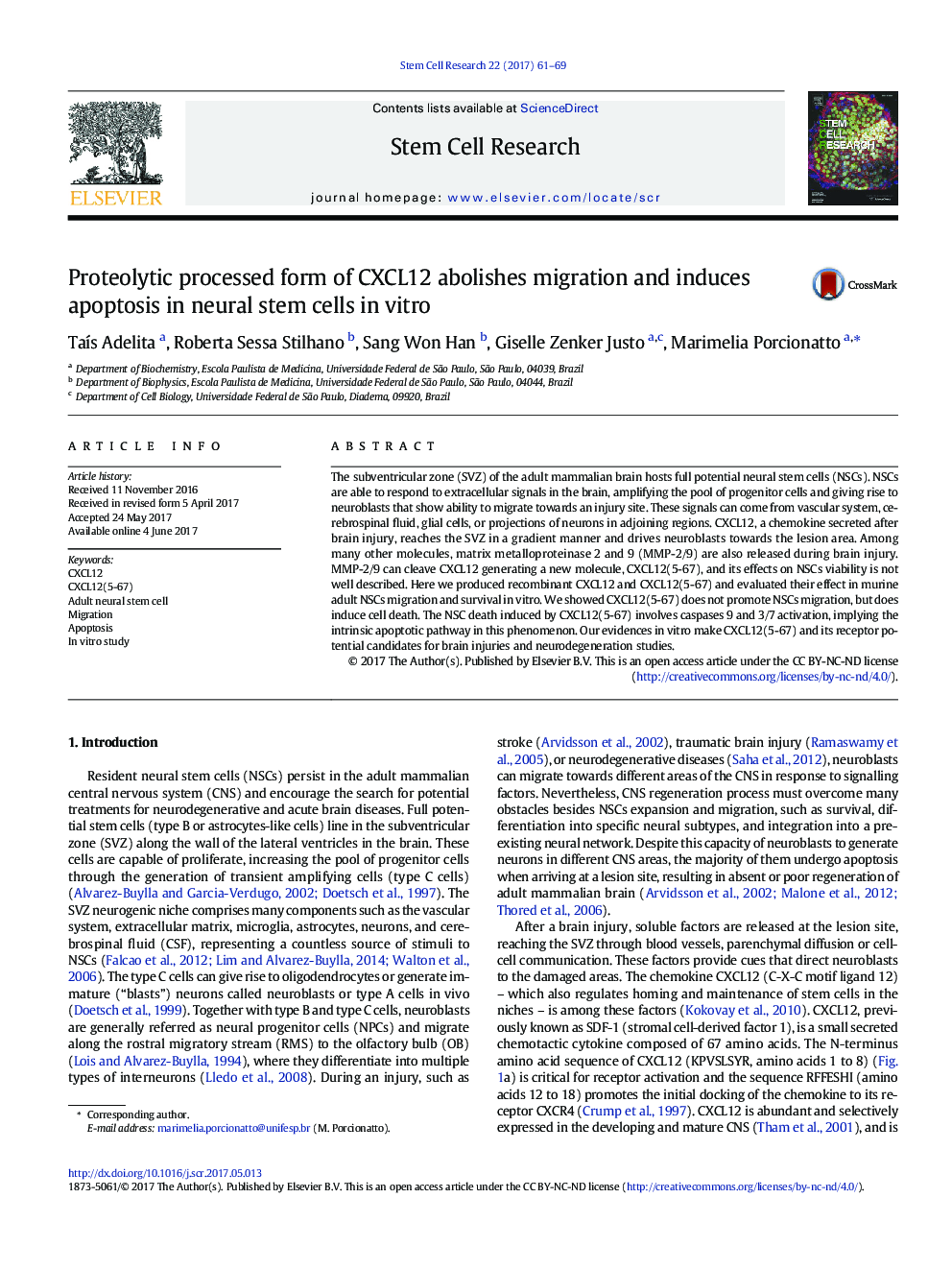| Article ID | Journal | Published Year | Pages | File Type |
|---|---|---|---|---|
| 5522811 | Stem Cell Research | 2017 | 9 Pages |
â¢CXCL12(5-67), a cleaved form of the chemokine CXCL12, abolishes neural stem cell migration in vitro.â¢CXCL12(5-67) induces neural stem cell death in vitro.â¢We propose that neural stem cell apoptosis induced by CXCL12(5-67) occurs via intrinsic pathway through CXCR3 activation.
The subventricular zone (SVZ) of the adult mammalian brain hosts full potential neural stem cells (NSCs). NSCs are able to respond to extracellular signals in the brain, amplifying the pool of progenitor cells and giving rise to neuroblasts that show ability to migrate towards an injury site. These signals can come from vascular system, cerebrospinal fluid, glial cells, or projections of neurons in adjoining regions. CXCL12, a chemokine secreted after brain injury, reaches the SVZ in a gradient manner and drives neuroblasts towards the lesion area. Among many other molecules, matrix metalloproteinase 2 and 9 (MMP-2/9) are also released during brain injury. MMP-2/9 can cleave CXCL12 generating a new molecule, CXCL12(5-67), and its effects on NSCs viability is not well described. Here we produced recombinant CXCL12 and CXCL12(5-67) and evaluated their effect in murine adult NSCs migration and survival in vitro. We showed CXCL12(5-67) does not promote NSCs migration, but does induce cell death. The NSC death induced by CXCL12(5-67) involves caspases 9 and 3/7 activation, implying the intrinsic apoptotic pathway in this phenomenon. Our evidences in vitro make CXCL12(5-67) and its receptor potential candidates for brain injuries and neurodegeneration studies.
Graphical abstractDownload high-res image (277KB)Download full-size image
